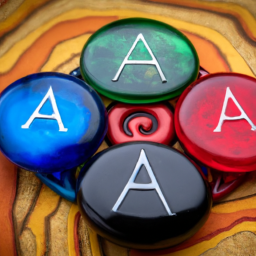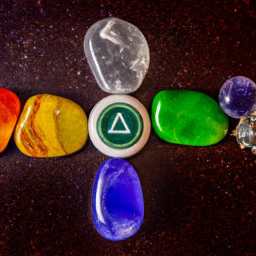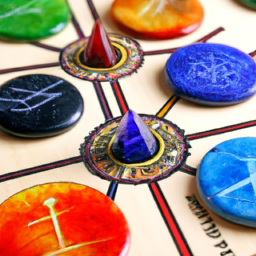: A Guide to Inner Harmony
Chakras, also known as the energy centers of the body, play a crucial role in our overall well-being and inner harmony. These seven spinning wheels of energy are located along the spine, from the base of the spine to the crown of the head. Each chakra is associated with specific organs, emotions, and aspects of our lives. When these energy centers are balanced, we experience feelings of vitality, peace, and balance. However, when they are blocked or imbalanced, it can result in physical, mental, and emotional disharmony.
The Seven Chakras and Their Meanings
Root Chakra (Muladhara): Located at the base of the spine, this chakra is associated with survival, security, and stability. When balanced, it gives us a sense of grounding, safety, and trust. When imbalanced, it can lead to feelings of fear, insecurity, and lack of stability.
Sacral Chakra (Svadhishthana): Situated just below the navel, this chakra is associated with our creativity, sexuality, and emotions. When balanced, it helps us express ourselves creatively and experience pleasure. When imbalanced, it can lead to low libido, emotional instability, and creative blockages.
Solar Plexus Chakra (Manipura): Located above the navel, this chakra is associated with our personal power, confidence, and self-esteem. When balanced, we feel empowered and in control of our lives. When imbalanced, it can result in feelings of low self-worth, lack of motivation, and control issues.
Heart Chakra (Anahata): Situated in the center of the chest, this chakra is associated with love, compassion, and connection. When balanced, it allows us to give and receive love freely. When imbalanced, it can lead to feelings of jealousy, bitterness, and lack of empathy.
Throat Chakra (Vishuddha): Located in the throat, this chakra is associated with communication, self-expression, and truth. When balanced, we can communicate effectively and authentically. When imbalanced, it can lead to difficulty expressing ourselves, a fear of speaking up, and feeling unheard.
Third Eye Chakra (Ajna): Situated between the eyebrows, this chakra is associated with intuition, imagination, and wisdom. When balanced, we have a clear vision and trust our inner guidance. When imbalanced, it can lead to indecisiveness, lack of clarity, and an overactive imagination.
Crown Chakra (Sahasrara): Located at the top of the head, this chakra is associated with spirituality, enlightenment, and connection to a higher power. When balanced, we experience a deep sense of peace and spiritual awareness. When imbalanced, it can lead to a lack of purpose, disconnection from spirituality, and feelings of isolation.
Signs of Imbalanced Chakras
If one or more of your chakras are blocked or imbalanced, you may experience a range of physical, emotional, and mental symptoms. For example, if your root chakra is imbalanced, you may experience lower back pain or digestive issues. Imbalances in the throat chakra can manifest as a sore throat or difficulty speaking your truth. And imbalances in the third eye chakra can lead to headaches or difficulty focusing.
Emotionally, imbalanced chakras can result in feelings of anxiety, anger, sadness, or fear. You may also notice patterns in your life that keep repeating, indicating an underlying energetic blockage.
Ways to Balance Your Chakras
Just like physical health, our energetic health also requires attention and maintenance. Here are some ways you can balance your chakras:
- Meditation: Meditation is one of the most effective ways to balance your chakras. By focusing on each chakra through visualization and breathing, you can release any blockages and restore balance. There are also guided meditations available specifically for balancing chakras.
- Yoga: Practicing yoga asanas (poses) that activate and stimulate each chakra can help restore balance and flow of energy. There are many yoga poses specifically designed for balancing chakras.
- Aromatherapy: Certain essential oils are known for their balancing effects on the chakras. For example, lavender can help balance the crown chakra, while peppermint can stimulate the root chakra.
- Crystal Healing: Each chakra is associated with a specific crystal that can help balance and align it. For example, amethyst is known to balance the third eye chakra, while rose quartz can open the heart chakra.
- Chanting and Affirmations: Reciting mantras or affirmations that correspond to each chakra can help restore balance. For example, the mantra “lam” is associated with the root chakra, while “om” is linked to the crown chakra.
Final Thoughts
Balancing your chakras is an ongoing practice that requires awareness, intention, and dedication. By nurturing and harmonizing our energy centers, we can experience a deeper sense of well-being, inner peace, and harmony. Remember to listen to your body and trust your intuition when it comes to your chakra health. With time and practice, you can achieve a state of balance and alignment in all aspects of your life.
Tip: If you are new to chakra balancing, it may be helpful to seek guidance from a trained energy healer or a yoga teacher who specializes in chakras. They can provide personalized recommendations and support as you embark on your journey towards inner harmony.
- https://www.yogajournal.com/yoga-101/chakras-101-basic-intro
- https://chopra.com/articles/7-chakras-explained#healing-the-chakras
- https://www.healthline.com/health/balancing-chakras





Amazing advice!
I find the practice of balancing your chakras to be a great way to restore and maintain my overall well-being. Thanks for the helpful advice!
Definitely something worth trying out!
Absolutely, this is a great way to nurture your wellbeing and tap into your inner energy!